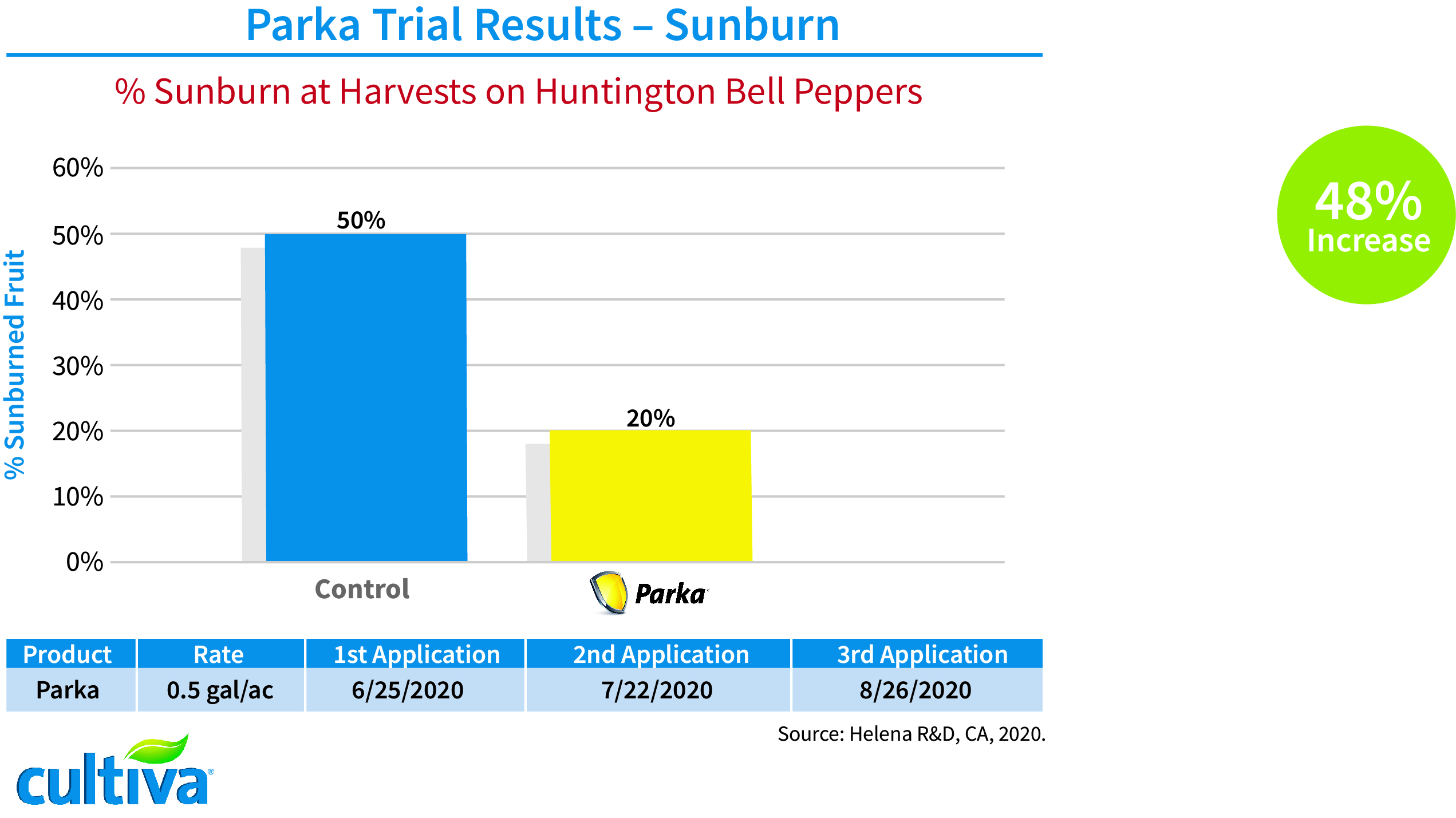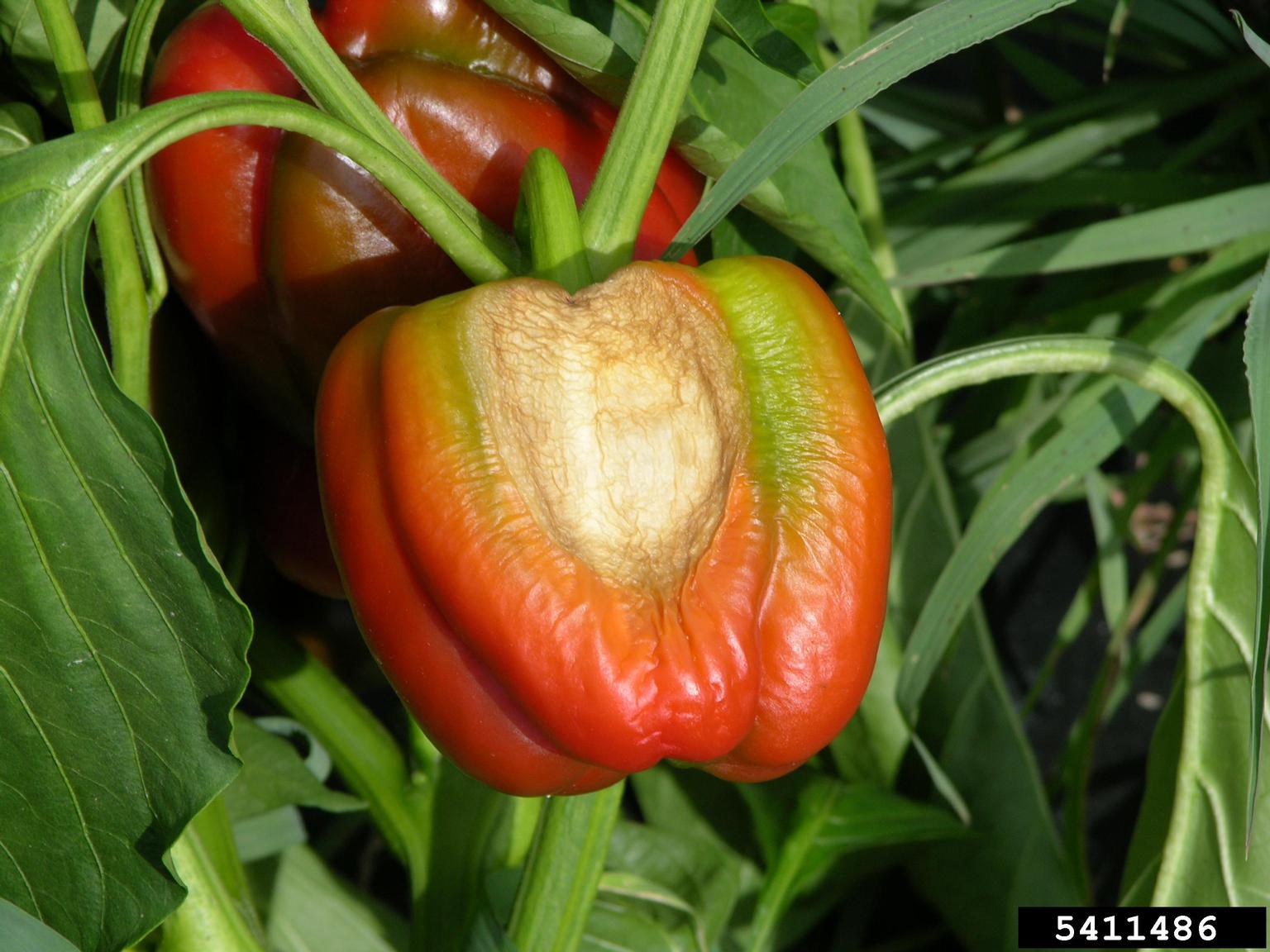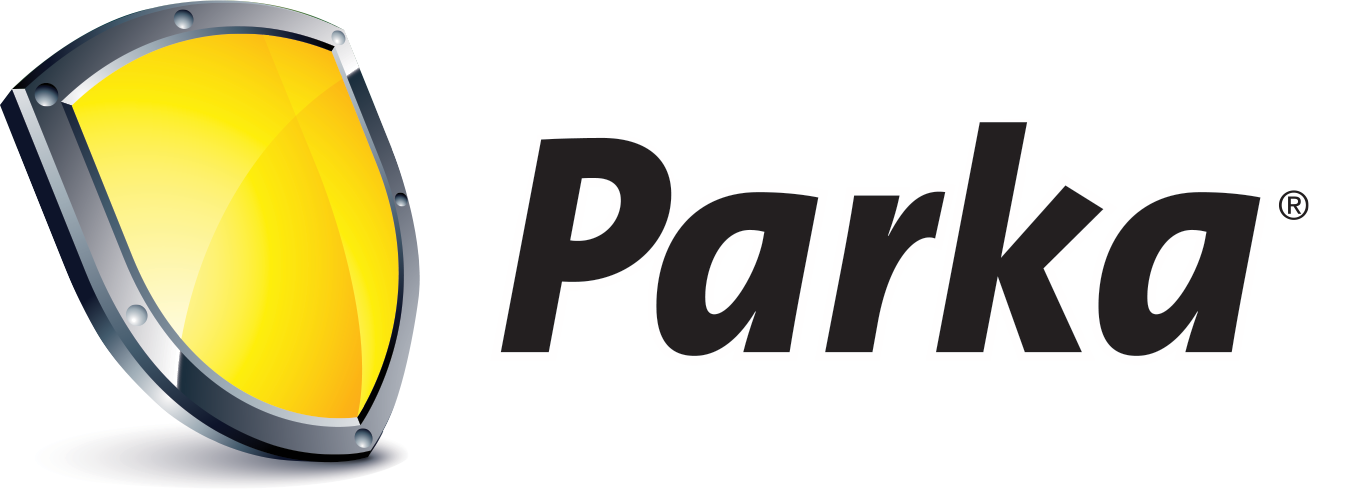Supplementing the Cuticle Means Less Cracking
Peppers are prone to cracking of the cuticle as they mature, and they can also become sunburned when light and heat levels are high. Both conditions result in unmarketable fruit and economic loss for growers. Cracking also provides an opening in the fruit cuticle through which pests and pathogens can enter. Parka can significantly reduce both cracking and sunburn on peppers by supplementing and stabilizing the fruit cuticle and by providing it with the physical protection of a clear, hydrophobic and elastic lipid bilayer.

Why use Parka on Peppers?
- Proven to reduce sunburn damage by up to 53% over control
- Reduces cracking by supplementing and protecting the fruit cuticle
- Increases fruit quality, yield and storage life
- Easily tank mixed with nutritionals and pesticides
- Invisible — doesn’t leave white residue on fruit.
- Exempt from maximum residue levels
- Zero preharvest interval, zero worker reentry interval
How to Use Parka in a Program
For both sunburn and cracking protection, Parka should be applied early about 15 days after first bloom.
After the initial application, apply Parka every 14 to21 days as needed until harvest at a rate of .5/gallon per acre. Parka is exempt from MRLs, has an excellent worker safety profile and does not have visible residue, so it can be applied near harvest if necessary.
FAQ
What Causes Sunburn in Peppers?
Sunburn is caused by excess solar radiation and heat, and there are three kinds of sunburn damage? Too much light energy can overwhelm the light absorption capacity of fruit by exceeding its photosynthetic ability. Heat exacerbates the problem, and in some cases is the sole cause of it.
How Does Parka Prevent Sunburn Damage?
Chlorophyll captures the energy from the sun, and in the first phase of photosynthesis (the PSII complex), this energy is used to split a water molecule. The “excited” electron released from this splitting is received by a molecule called pheophytin. Both chlorophyll and pheophytin are necessary tools the plant cells need to deal with energy from the sun. Parka creates measurable increases in chlorophyll and pheophytin, which means the energy is used for growth instead of causing photo-oxidative damage.
This is a win-win, for the plant and for the grower. Research shows the photochemical efficiency of the PSII complex is increased in Parka-treated fruit. Transpiration rates, CO2 exchange and stomatal conductance were all improved, which reduced stress in the plant, sunburn damage to the fruit, and resulted in increased fruit quality.

Photo credit for sunscald on peppers:
Don Ferrin, Louisiana State University Agricultural Center, Bugwood.org
What Causes Cracking in Peppers?
Cracking in peppers results in unmarketable fruit. It most often occurs when night temperatures are low and daytime temperatures are high. This results in an increased differential in water transpiration between day and night. During the day, leaves and fruit naturally lose water through evaporation and transpiration; the higher the temperature and amount of sunlight, the faster the rate of transpiration. When temperatures drop substantially at night, transpiration slows significantly, although is still being taken up by the roots. The pressure (turgor) of the water accumulation in the fruit can cause cracking, because the cuticle cannot expand quickly enough. High humidity and cloudy days also contribute to cracking, since both also reduce water loss through transpiration.
Cracking occurs primarily in fruit closer to maturity. At this stage, the fruit wall is thicker, and sucrose (sugar content) is higher, meaning water is drawn into the fruit even more during periods of low transpiration. A thicker fruit wall might seem to be a defense against cracking, but many times it is more prone to the disorder because it absorbs more water and is less elastic.
How Does Parka Prevent Cracking?
Parka supplements and stabilizes the cuticle itself and provides a clear, protective and elastic lipid bi-layer over the cuticle. By both strengthening and physically protecting the cuticle, Parka helps prevent cracking. If applied in the early stages of fruit growth, if microcracks do occur, Parka fills them in, sealing them against moisture and pathogen and pest entry. If applied at regular intervals throughout fruit development, Parka continues to seal microcracks and strengthen and supplement the cuticle.
What Do Growers Like About Parka?
Growers like Parka because it has excellent efficacy for sunburn protection and cracking prevention in peppers. It is grower-friendly in other significant ways, as well, particularly its flexibility in tank mixing. Parka can be tank mixed with a wide variety of other inputs, including both fertilizers and pesticides. This saves the fuel and labor costs of making an additional pass in the field. Harvest crews and packers like Parka, because it doesn’t have the white residue that can be an irritant during picking and needs to be scrubbed off postharvest.


